5 Best Tools for Building Workflow Automation in 2025
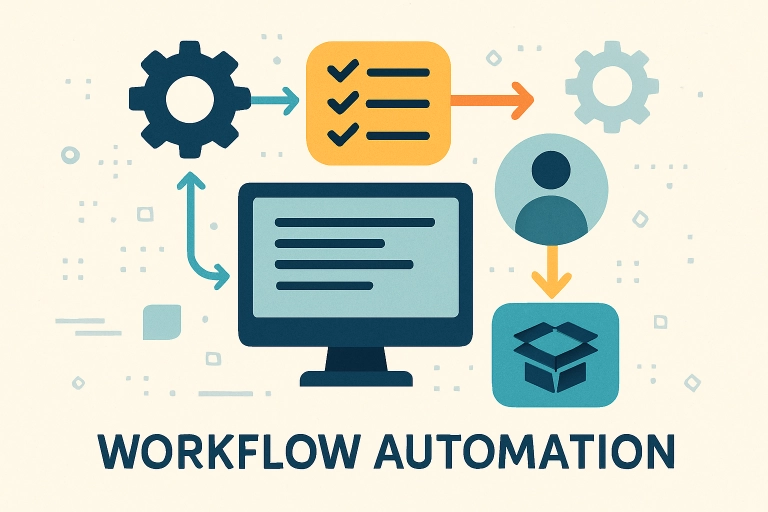
In today’s fast-paced business environment, workflow automation has become essential for organizations looking to streamline operations, reduce manual tasks, and improve efficiency. The right workflow automation tool can transform how your business operates, connecting disparate systems and automating repetitive processes.
This article explores five of the best workflow automation tools available in 2025, including the innovative ChatterKB platform that’s changing how businesses approach automation.
Understanding Workflow Automation
Workflow automation leverages technology to execute business process tasks automatically, minimizing manual intervention while maximizing efficiency and accuracy. This technology transforms how information flows and tasks are assigned, converting manual processes into streamlined automated systems.
When considering workflow automation comparison factors, it’s important to understand that applications span across industries and use cases—from basic data processing to sophisticated cross-departmental collaboration workflows.
Benefits of Workflow Automation
Enhanced Productivity
By automating repetitive tasks, employees can redirect their focus toward creative and strategic work, significantly boosting overall efficiency and output quality.
Cost Reduction
Automated workflows substantially decrease labor expenses, particularly when handling high volumes of repetitive operations that would otherwise require significant manual effort.
Real-Time Insights
Automated systems provide continuous process monitoring, enabling management to access up-to-date performance metrics and make data-driven decisions based on comprehensive analytics.
Industry Applications
Workflow automation adapts to the unique challenges across various sectors:
Financial Operations
Finance departments streamline approval workflows including invoice processing, expense management, and account reconciliation. Automated tools populate data fields with precision, minimizing errors while ensuring regulatory compliance.
HR Processes
Human Resources teams automate the entire employee lifecycle—from recruitment through onboarding to offboarding. Systems automatically generate employee profiles, distribute welcome communications, and track completion of orientation activities.
Technical Support
IT departments implement automation for asset management, change control processes, and service desk operations. Support teams benefit from automated issue identification and resolution pathways, dramatically improving response times.
Revenue Generation
Sales teams deploy automation for lead distribution, proposal approvals, and pipeline management. Marketing departments leverage these tools for campaign execution, social media scheduling, and relationship management.
Production Environments
Manufacturing operations utilize automation for production scheduling, task assignment, and real-time monitoring—enhancing operational efficiency and product quality throughout the supply chain.
Development Workflows
Software teams implement automated compilation, testing, and deployment processes. Integration capabilities connect with requirement management, issue tracking, and version control systems for seamless development cycles.
Implementation Strategy
-
Workflow Assessment: Thoroughly evaluate existing processes to identify automation candidates and potential benefits.
-
Goal Definition: Establish clear objectives including expected efficiency gains, cost reductions, and error minimization targets.
-
Tool Selection: Carefully evaluate available automation platforms to find the optimal solution for your specific requirements.
-
Process Design: Create detailed workflow diagrams outlining automation logic and decision rules for each process step.
-
Deployment: Implement the designed automation processes, including necessary development work, systems integration, and comprehensive testing.
-
Team Training: Ensure all users receive proper training to effectively utilize the new automated systems.
-
Continuous Optimization: Monitor performance metrics and refine processes based on operational feedback and changing business needs.
Automation Tool Categories
The marketplace offers diverse workflow automation solutions to match different organizational needs:
No-Code/Low-Code Platforms
Tools like NocoBase and Appy Pie feature intuitive drag-and-drop interfaces that enable workflow creation without programming knowledge.
Integration Specialists
Platforms such as Zapier and Make focus on connecting disparate applications and services to facilitate seamless data transfer and process automation.
Self-Hosted Solutions
Open-source options like n8n provide organizations with complete control through self-hosted workflow automation that can be deployed on internal infrastructure.
Best Workflow Automation Tools
ChatterKB: Natural Language Workflow Automation
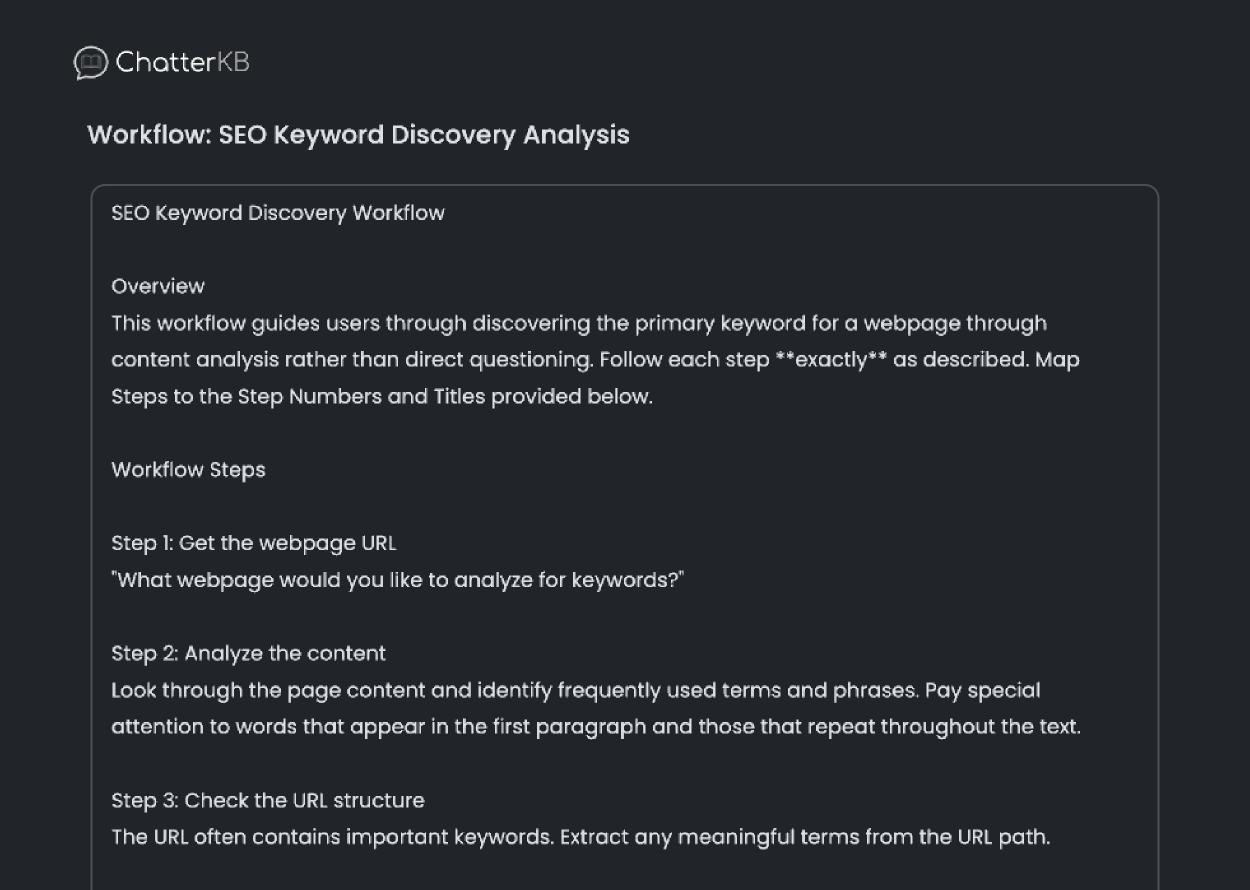
ChatterKB represents a fresh approach to workflow automation that bridges the gap between simple document search services and complex automation tools. Unlike traditional workflow platforms that require technical expertise, ChatterKB uses a conversational interface that makes automation accessible to everyone in your organization.
Key Features:
- Natural Language Interface: Create workflows through simple conversations rather than complex flowcharts or node-based systems
- Knowledge Base Integration: Automatically learns from your meetings, documents, and chats to make workflows smarter over time
- Self-Correcting Workflows: Intelligent systems that can adapt when circumstances change, automatically adjusting paths when new information becomes available
- Component-Based Architecture: Each workflow step is focused on a specific task, making workflows easier to understand and troubleshoot
- Institutional Memory: Preserves organizational knowledge and builds intelligence that compounds in value over time
- Extend tools using Zapier’s MCP
Best For:
Small businesses without technical expertise who need practical business applications and user-friendly interfaces. ChatterKB’s approach eliminates the learning curve typically associated with workflow automation tools, allowing teams to start creating value immediately.
n8n: Open-Source Workflow Automation
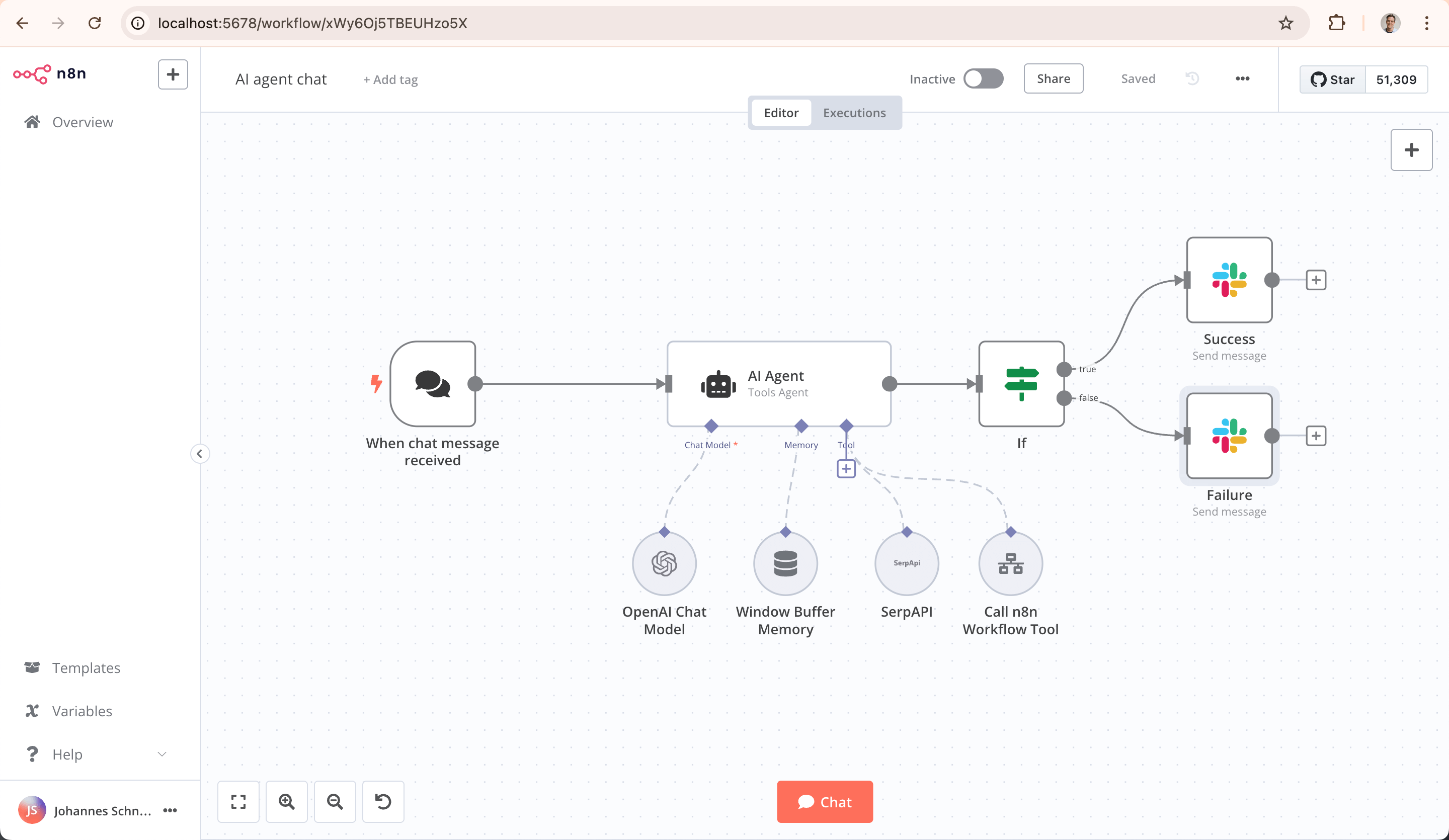
n8n is a fair-code licensed workflow automation tool that allows users to connect different services and build automated workflows with a node-based visual interface.
Key Features:
- Node-Based Visual Interface: Intuitive drag-and-drop workflow builder
- 200+ Built-in Integrations: Connect with popular services and applications
- Self-Hosted Option: Deploy on your own infrastructure for complete data control
- Fair-Code License: Open-source core with some enterprise features
- Webhook Support: Trigger workflows based on external events
Best For: Technical users and organizations that prefer open-source solutions with complete data control.
Zapier: User-Friendly Integration Platform

Zapier remains one of the most popular workflow automation tools, known for its extensive app integrations and user-friendly interface.
Key Features:
- 3,000+ App Integrations: Connect with virtually any popular service
- No-Code Interface: Easy to use for non-technical users
- Multi-Step Zaps: Create complex workflows with conditional logic
- Templates Library: Get started quickly with pre-built workflows
- Robust Testing: Test your workflows before deploying them
Best For: Small to medium businesses looking for quick integration between popular apps without coding.
Make (formerly Integromat): Visual Workflow Builder
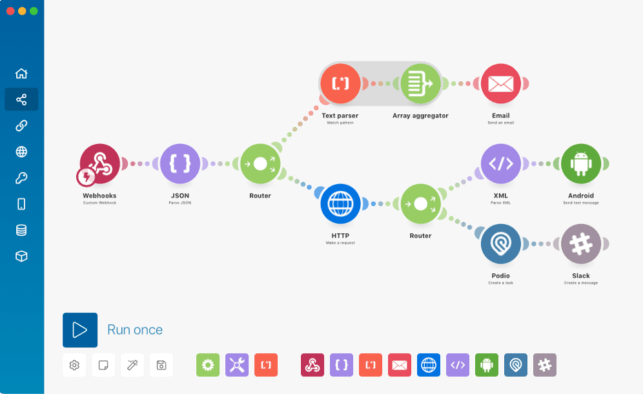
Make offers a highly visual approach to workflow automation with powerful data mapping and transformation capabilities.
Key Features:
- Visual Workflow Canvas: Intuitive interface for building complex workflows
- Advanced Data Mapping: Powerful tools for transforming data between services
- Iterative Processing: Handle arrays and collections efficiently
- Error Handling: Built-in tools for managing errors and exceptions
- Flexible Scheduling: Run workflows on custom schedules
Best For: Users who need advanced data transformation capabilities with a visual interface.
Gumloop
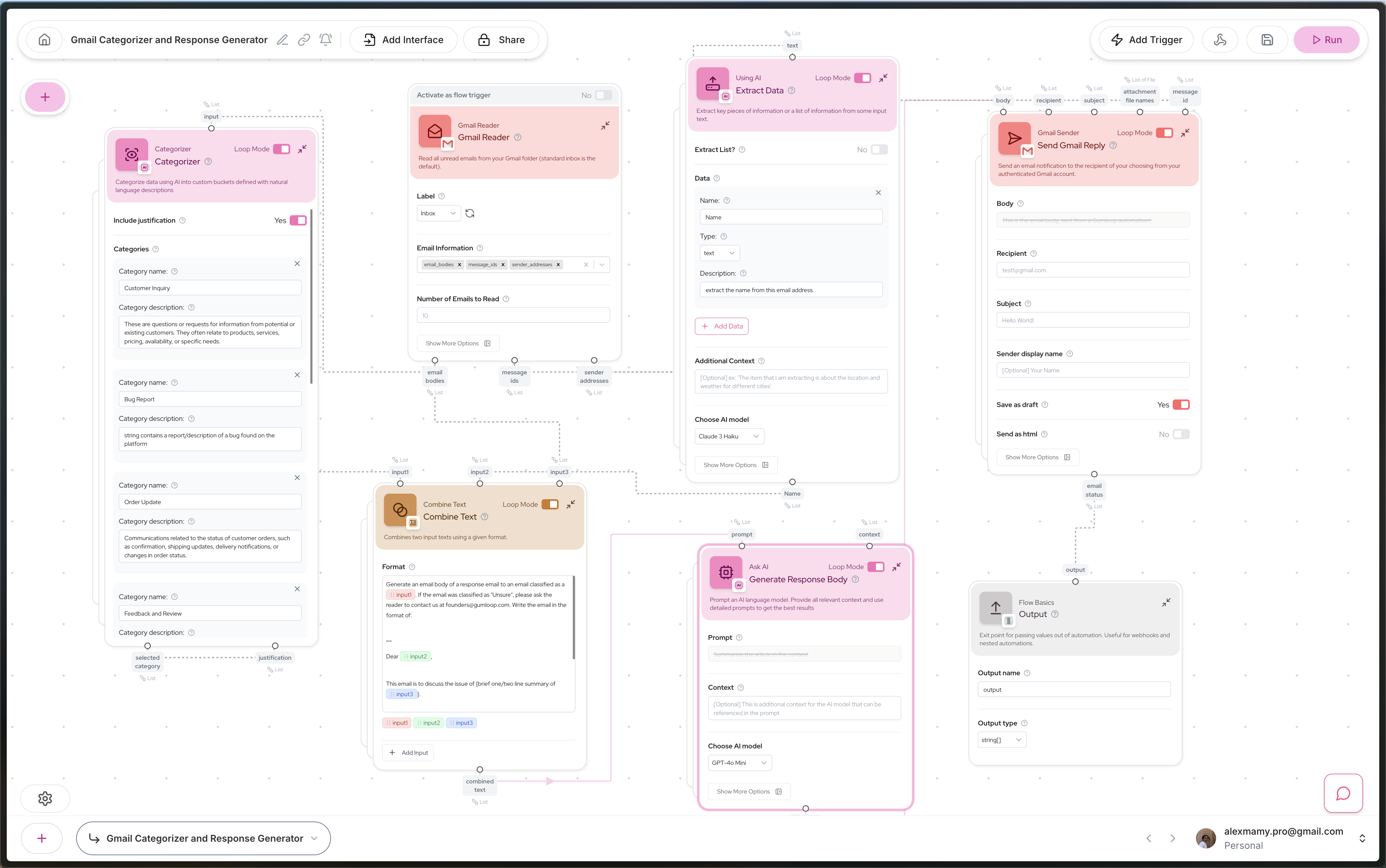
Gumloop is a modern workflow automation platform designed to help businesses streamline their operations with a focus on simplicity and powerful integration capabilities.
Key Features
- Visual Workflow Builder: Intuitive drag-and-drop interface that makes creating complex workflows accessible to users of all technical levels
- Extensive Integration Library: Connects with hundreds of popular business applications and services including Slack, Google Workspace, Microsoft 365, Salesforce, and more
- AI-Enhanced Automation: Leverages artificial intelligence to suggest workflow improvements and automate repetitive tasks with minimal setup
- Custom Logic Controls: Advanced conditional logic, loops, and error handling capabilities for creating sophisticated business processes
- Real-Time Monitoring: Comprehensive dashboard for tracking workflow performance, identifying bottlenecks, and optimizing processes
- Collaborative Environment: Team-based workflow creation and management with role-based permissions and version control
Best For: Gumloop is particularly well-suited for mid-sized businesses and growing startups that need powerful automation capabilities without dedicated technical resources. Its balance of user-friendly design and robust functionality makes it an excellent choice for teams looking to quickly implement automation across multiple departments.
Comparison: How ChatterKB Stands Out
While traditional workflow automation tools like n8n, Zapier, Make, and Gumloop focus on connecting applications through visual interfaces or node-based systems, ChatterKB takes a fundamentally different approach:
- Interface Approach: ChatterKB uses natural language workflow tools for creation, while tools like n8n use node-based visual interfaces that require technical understanding.
- Knowledge Integration: Unlike other tools that focus solely on connecting apps, ChatterKB combines knowledge-based workflow automation with traditional process automation, creating an intelligence system that compounds in value over time.
- Memory Architecture: ChatterKB employs a memory-centric execution model that maintains contextual intelligence across interactions, while traditional tools like n8n use more stateless workflow approaches.
- Target Users: ChatterKB is designed specifically for accessibility by non-technical users, particularly small businesses and agencies (5-10 people), while tools like n8n target more technical users.
- Workflow Creation: ChatterKB transforms copy, prose, or briefs into actionable team SOPs with a focus on practical work “flows” rather than flowcharts.
Choosing the Right Tool for Your Needs
When selecting a workflow automation tool, consider these factors:
- Technical Expertise: ChatterKB and Zapier are more accessible to non-technical users, while n8n and Gumloop may require more technical knowledge.
- Integration Needs: Zapier offers the most out-of-the-box integrations, while ChatterKB focuses on knowledge-based workflows with Zapier MCP for additional integrations.
- Knowledge Management: If preserving institutional memory while automating workflows is important, ChatterKB offers unique capabilities in this area.
- Complexity: Make and Gumloop excel at complex data transformations, while ChatterKB excels at making complex workflows accessible through natural language.
- Deployment: n8n offers self-hosting options for data sovereignty, while ChatterKB, Zapier, Make, and Gumloop are primarily cloud-based.
- Business Size: For those seeking the best AI for small business workflow automation, ChatterKB’s natural language approach eliminates the steep learning curve typically associated with automation tools.
Conclusion
The workflow automation landscape continues to evolve in 2025, with tools catering to different user needs and technical capabilities. ChatterKB represents an innovative approach that makes natural language workflow tools accessible to everyone, while established players like n8n, Zapier, Make, and Gumloop continue to offer robust solutions for different use cases.
When conducting a thorough workflow automation comparison, consider how each platform aligns with your specific business requirements, technical resources, and long-term goals. For small businesses seeking the best AI for small business workflow automation, ChatterKB’s knowledge-based workflow automation approach offers a compelling alternative to traditional node-based systems.
For businesses looking to implement workflow automation, the choice ultimately depends on your specific needs, technical resources, and how you want to approach the creation and management of automated processes.